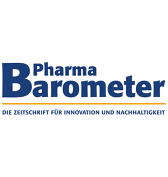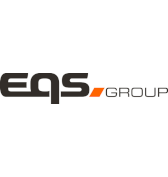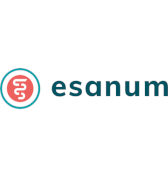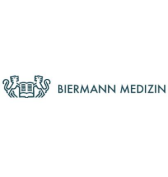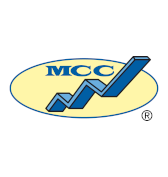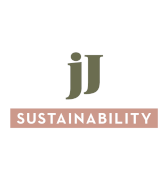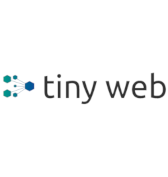DUBLIN–(BUSINESS WIRE)–The “Global Postpartum Hemorrhage Devices Market Size, Share & Industry Trends Analysis Report By Product, By Regional Outlook and Forecast, 2022 – 2028” report has been added to ResearchAndMarkets.com’s offering.
The Global Postpartum Hemorrhage (PPH) Devices Market size is expected to reach $1.05 billion by 2028, rising at a market growth of 5.2% CAGR during the forecast period.
Postpartum hemorrhage (PPH) is the most prevalent type of obstetric hemorrhage and one of the primary causes of maternal mortality. Blood loss from vaginal or cesarean delivery is known as PPH. Postpartum hemorrhage is classified based on the amount of blood lost. Blood loss of less than 500 mL is considered primary PPH, while blood loss of more than 500 mL is considered secondary PPH.
Modern PPH treatment devices outperform previous procedures since they are designed to treat uterine diseases and difficulties with uterine contractions. PPH devices are non-pneumatic anti-shock garments, uterine balloon tamponade, and inject prefilled injectable systems that are used as second-line intervention devices. These devices are helpful in stopping blood flow and stabilizing the patient’s condition until more serious medical help arrives.
Uterine atony, a disease in which the uterus fails to contract following the birth of the baby, is the most prevalent cause of PPH. First response interventions, such as uterotonic drugs (primarily oxytocin), isotonic crystalloids, tranexamic acid, and uterine massage; and, if necessary, refractory PPH interventions, such as compressive measures (aortic compression or bimanual uterine compression), intrauterine balloon tamponade, and nonpneumatic anti shock garment (NASG). Surgical intervention (compressive sutures, artery ligation, or hysterectomy) is required if these methods fail. In 2012, the World Health Organization (WHO) issued a conditional recommendation in favor of uterine balloon tamponade (UBT) in cases when uterotonics were unavailable or ineffective in reducing bleeding.
Market Growth Factors:
Rise in Complications Like Obstetric Hemorrhage
The postpartum hemorrhage devices market is growing due to a rise in complications such as acute postpartum hemorrhage. The most common and dangerous complication of childbirth is obstetric hemorrhage. Postpartum hemorrhage (PPH) is traditionally described as a blood loss of more than 500 mL estimated with a vaginal delivery or more than 1000 mL estimated during a cesarean delivery. The American College of Obstetrics and Gynecology characterized this in 2017 as an accumulation of blood loss of more than 1000 mL with signs and symptoms of hypovolemia within 24 hours after the birth procedure, regardless of delivery mode.
Growing Investment in Healthcare Sector in Developed and Developing Countries
Governments of developing countries such as India and China are investing heavily in the healthcare sector of their respective countries. In 2020, for instance, the Indian health tech business was estimated to be worth $1.9 billion. It is predicted to reach $ 5 billion by 2023, with a CGAR of 39%. The Indian digital healthcare market was worth USD 1.50 billion in 2018 and is expected to grow to USD 6.26 billion by 2024. The expansion of the healthcare business is likely to positively impact the postpartum hemorrhage devices market. Even in developed countries, such as the United States, governments are spending enormous amounts to modernize and expand the healthcare sector.
Marketing Restraining Factor:
Inaccuracies in Measuring Blood Loss in Obstetric Hemorrhage
Postpartum hemorrhage is the leading cause of maternal death in the United States, accounting for about 11% of all maternal deaths. Significantly, obstetric hemorrhage is responsible for 54-93% of maternal deaths. Health care providers’ inaccurate estimation of actual blood loss at the time of birth and in the immediate postpartum period is a major cause of delayed hemorrhage response, according to studies. Underestimations of blood loss lead healthcare providers into believing that deployment of postpartum hemorrhage are not necessary, thus, limiting the use of postpartum hemorrhage devices.
Scope of the Study
Market Segments Covered in the Report:
By Product
- Uterine Tamponade Devices
- Prefilled Injection System
- Non-Pneumatic Anti-Shock Garment
By Geography
- North America
- US
- Canada
- Mexico
- Rest of North America
- Europe
- Germany
- UK
- France
- Russia
- Spain
- Italy
- Rest of Europe
- Asia Pacific
- China
- Japan
- India
- South Korea
- Singapore
- Malaysia
- Rest of Asia Pacific
- LAMEA
- Brazil
- Argentina
- UAE
- Saudi Arabia
- South Africa
- Nigeria
- Rest of LAMEA
Key Market Players
- Teleflex, Inc.
- Becton, Dickinson and Company
- Bactiguard Holding AB
- Utah Medical Products, Inc.
- Organon & Co.
- Cook Medical, Inc.
- PATH
- Obstetrx, Inc.
- Zoex Corporation
- 3rd Stone Design, Inc.
For more information about this report visit https://www.researchandmarkets.com/r/vsmtpg
Contacts
ResearchAndMarkets.com
Laura Wood, Senior Press Manager
press@researchandmarkets.com
For E.S.T Office Hours Call 1-917-300-0470
For U.S./CAN Toll Free Call 1-800-526-8630
For GMT Office Hours Call +353-1-416-8900








